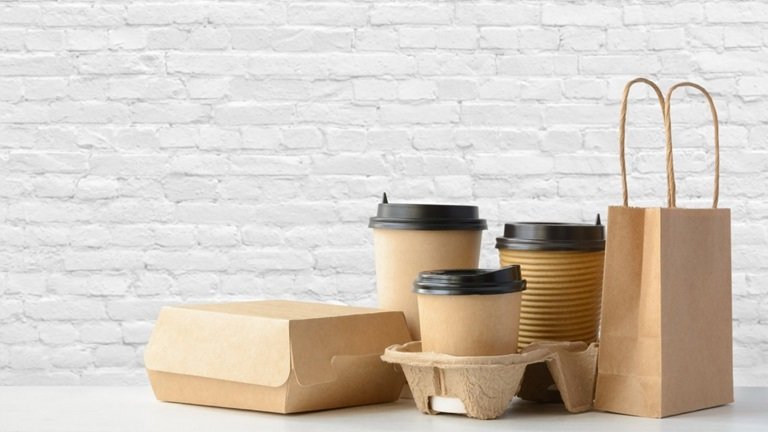Packaging’s Next Frontier Trends and Innovations Shaping the Future

Packaging
Packaging is more than just a means to contain goods; it’s the first consumer interaction with a product that can influence purchase decisions. In a competitive market, it acts as a silent salesperson, conveying brand values, ensuring safety, and enhancing satisfaction. This blog post explores the evolution of packaging, highlighting trends and innovations shaping its future.
A Walk Through Packaging History
From humble beginnings to a booming industry, packaging has evolved considerably over the centuries. In ancient times, natural materials such as leaves, animal skins, and clay were used to store and protect food and goods. The introduction of glass and metal during the Industrial Revolution marked a significant turning point, enabling mass production and distribution.
Fast forward to the 20th century, when plastic took center stage. While it revolutionized packaging with its versatility and cost-effectiveness, it also introduced environmental challenges that we are still grappling with today. Despite its ecological drawbacks, plastic has paved the way for innovative packaging solutions, prompting industries to continuously seek out more sustainable alternatives.
Packaging today is a dynamic blend of tradition and technology, constantly adapting to meet the needs of modern consumers. By understanding its past, we can better appreciate the innovative strides being made in the packaging world today.
The Rise of Sustainable Packaging
In recent years, there’s been a seismic shift towards sustainable and eco-friendly packaging. Consumers are more environmentally conscious than ever, demanding products that reduce waste and carbon footprints. This has led to the development of packaging materials that are biodegradable, recyclable, and compostable.
Take, for example, the rise of bioplastics made from renewable sources like cornstarch and sugarcane. These materials offer the benefits of traditional plastics but with a reduced environmental impact. Similarly, paper and cardboard continue to be popular choices, with advancements in water-based coatings that improve their durability and water resistance.
Brands that prioritize sustainability are not only meeting consumer demands but are also gaining a competitive edge. With more companies adopting eco-friendly practices, it’s clear that sustainable packaging is not just a trend but a necessary evolution for the industry.
Current Packaging Trends Across Industries
Packaging trends can vary significantly across different industries, each with its unique set of challenges and consumer expectations. In the food industry, for example, there’s a strong focus on freshness and shelf life. Innovations like vacuum sealing and modified atmosphere packaging (MAP) help extend the freshness of perishable goods, reducing food waste and enhancing consumer satisfaction.
The cosmetics industry, on the other hand, emphasizes aesthetics and luxury. Here, packaging must not only protect the product but also convey the brand’s image and appeal to its target audience. Innovative designs, such as airless pump bottles and magnetic closures, add a touch of sophistication while ensuring product integrity.
In the electronics industry, packaging must balance protection with presentation. With devices becoming increasingly fragile and expensive, packaging solutions like custom foam inserts and anti-static materials are crucial in safeguarding products during transit. These examples highlight how packaging trends are constantly evolving to meet the specific needs of different sectors.
Technology’s Role in Transforming Packaging
Technology is revolutionizing the packaging industry, driving efficiency, creativity, and customization. Digital printing, for instance, allows for high-quality, cost-effective printing on demand, enabling brands to personalize their packaging for limited-edition releases or regional markets, including tailored PR packages.
Smart packaging is another exciting development, integrating technology like QR codes, RFID tags, and NFC chips to enhance the consumer experience. These features provide valuable information on product origin, and usage instructions, and even interact with smartphone apps for a truly connected experience.
Automation also plays a significant role in packaging production, streamlining processes, and reducing labor costs. Robotic systems can handle intricate tasks with precision, improving consistency and reducing waste. By leveraging technology, brands are pushing the boundaries of what packaging can achieve.
Innovators Leading the Packaging Revolution
Several companies are making waves with their innovative packaging solutions, setting new standards for the industry. One such example is Loop, a global platform that offers reusable packaging for everyday products. By partnering with major brands like Unilever and Nestlé, Loop is challenging the traditional single-use packaging model and promoting a circular economy.
Another noteworthy innovation is Ooho, an edible water pod created by Skipping Rocks Lab. Made from seaweed extract, Ooho offers a biodegradable alternative to plastic bottles, revolutionizing how we consume water on the go.
These case studies demonstrate how innovative packaging can disrupt traditional practices and pave the way for a more sustainable and efficient industry. By thinking outside the box, these companies are not only meeting consumer demands but also shaping the future of packaging.
The Future of Packaging Trends and Innovations
Looking ahead, the future of packaging is poised for exciting developments. Artificial intelligence (AI) and machine learning are expected to play a significant role in optimizing packaging design and production. By analyzing consumer data, AI can predict trends and preferences, enabling brands to create more targeted and effective packaging solutions.
Automation will continue to advance, with the adoption of smart factories that leverage robotics and IoT technology. These factories will streamline production processes, reduce waste, and improve overall efficiency. Additionally, the integration of blockchain technology will enhance transparency and traceability in the supply chain, giving consumers greater confidence in the products they purchase.
In terms of materials, we can expect further advancements in sustainable options, with a focus on reducing plastic waste and promoting a circular economy. Innovations like biodegradable films and plant-based plastics will become more prevalent, offering eco-friendly alternatives to traditional materials.
Conclusion
Now that we have explored the current packaging trends and innovative solutions, it’s clear that the industry is undergoing a major transformation. From sustainability to technology, consumer demands and market forces are driving change and inspiring innovators to push the boundaries of what packaging can achieve.






